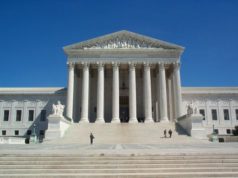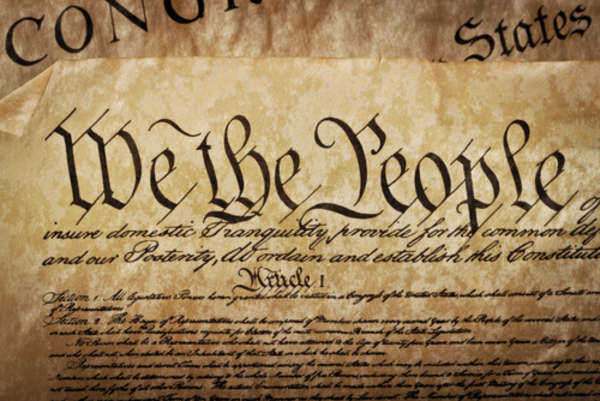Table of Contents

The Tax and Spend Power of the United States government is one of the most important powers that it possesses. Through this power, the government is able to raise revenue through various taxes and use the money to provide for the common welfare of the people. The Supreme Court of the United States has played a crucial role in interpreting this power and in deciding important cases related to it. In this article, we will explore the Supreme Court Tax and Spend Power, its historical context, its evolution over time, and the important decisions made by the Supreme Court related to this power.
Historical Context
The Tax and Spend Power of the United States government has its roots in the Constitution of the United States. Article I, Section 8, Clause 1 of the Constitution gives Congress the power to levy and collect taxes, duties, imposts, and excises in order to pay the debts and provide for the common defense and general welfare of the United States. This clause is known as the “Taxing and Spending Clause” and is one of the most important clauses in the Constitution.
The framers of the Constitution saw the Tax and Spend Power as a way to provide for the common welfare of the people while also ensuring that the government had the necessary resources to carry out its functions. They were also aware of the potential for abuse of this power and included several safeguards to prevent misuse.
The Evolution of the Tax and Spend Power
The Tax and Spend Power has evolved over time as the needs of the country have changed. In the early days of the Republic, the government relied mostly on import tariffs and excise taxes to raise revenue. However, as the country expanded and its needs grew, Congress began to levy more taxes and to spend more money on various programs.
One of the most significant changes to the Tax and Spend Power came during the New Deal era in the 1930s. President Franklin D. Roosevelt and the Democratic Party pushed for a more active role for the federal government in providing for the needs of the people. They introduced a series of programs and initiatives that required significant federal funding, such as Social Security, the Works Progress Administration, and the Civilian Conservation Corps. In order to fund these programs, Congress passed a series of laws that increased taxes and levied new ones.
This expansion of the Tax and Spend Power was challenged by some who argued that it exceeded the powers granted to Congress in the Constitution. However, in a series of important cases, the Supreme Court upheld the constitutionality of these laws and established a broad interpretation of the Tax and Spend Power.
Important decisions made by the Supreme Court
There have been many important decisions made by the Supreme Court related to the Tax and Spend Power. Some of the most significant are discussed below.
McCulloch v. Maryland (1819)
McCulloch v. Maryland was one of the earliest cases that dealt with the scope of federal power under the Constitution. The case involved a dispute between the state of Maryland and the Second Bank of the United States, which had been chartered by Congress to serve as a central bank. Maryland had passed a law that levied a tax on all banks, including the Second Bank of the United States.
The Supreme Court had to decide whether Congress had the power to create a national bank and whether Maryland had the power to tax it. The Court held that Congress did have the power to create a national bank under the Necessary and Proper Clause of the Constitution. This clause gave Congress the power to make all laws necessary and proper for carrying out its other powers, including the power to tax and spend.
The Court also held that Maryland did not have the power to tax the Second Bank of the United States. The Court held that the Constitution gave the federal government supremacy over the states in matters related to taxation and that Maryland’s tax violated this principle.
Gibbons v. Ogden (1824)
Gibbons v. Ogden was another early case that dealt with the scope of federal power under the Constitution. The case involved a dispute between two steamboat operators, one of whom had been granted an exclusive license by the state of New York to operate in its waters. The other operator, Gibbons, had been granted a license by the federal government to operate in any waters within the United States.
The Supreme Court had to decide whether the state of New York had the power to grant an exclusive license to operate in its waters and whether the federal government had the power to grant a license that superseded New York’s. The Court held that the federal government did have the power to regulate commerce among the states and that this power included the power to regulate navigation.
The Court also held that New York’s exclusive license violated this power. This case established a broad interpretation of the Commerce Clause of the Constitution and gave Congress the power to regulate a wide range of economic activities.
South Dakota v. Dole (1987)
South Dakota v. Dole is a more recent case that dealt with the scope of the Tax and Spend Power. The case involved a federal law that required states to raise their legal drinking age to 21 in order to receive federal highway funds. South Dakota challenged the law, arguing that it exceeded Congress’s power under the Constitution.
The Supreme Court upheld the law, holding that Congress had the power to condition the receipt of federal funds on certain requirements. The Court held that the condition was related to a legitimate federal interest, namely reducing alcohol-related fatalities on the nation’s highways.
This case established an important principle that has been used in other cases since then. It allows Congress to use the Tax and Spend Power to influence state policies and to achieve certain federal objectives, as long as the conditions are related to a legitimate federal interest and are not coercive.
Conclusion
The Tax and Spend Power of the United States government is a crucial power that allows it to raise revenue and provide for the common welfare of the people. The Supreme Court has played a crucial role in interpreting this power and in deciding important cases related to it. Through its decisions, the Court has established a broad interpretation of the Tax and Spend Power and has allowed Congress to use it to achieve important federal objectives.
Located within Article I, Section 8 of the United States Constitution, the “Taxing and Spending Clause” represents an aspect by which the Federal Government possesses the authority to impose taxation upon the general public. Subsequent parts of this Clause include that of the “General Welfare Clause” as well as the “Uniformity Clause.” As set forth, this Clause maintains the Government’s authority to both tax and spend Government funds.


























